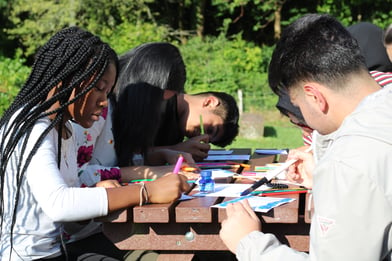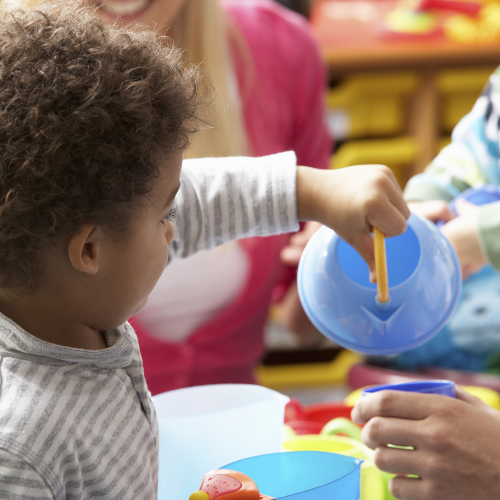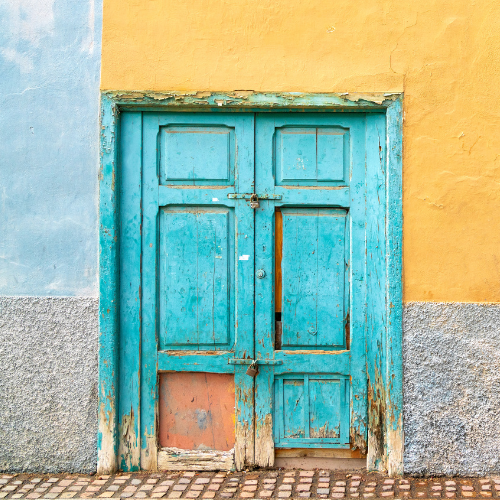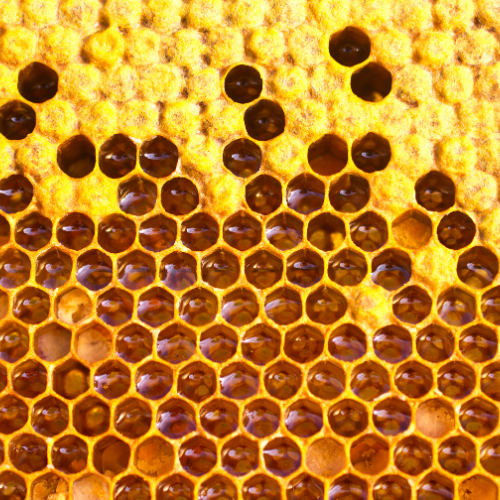Something Powerful
CREATIVITY
If you want to be more creative, you just have to be more natural – Tom and David Kelley
Have you ever watched children fearlessly follow their creative instincts? The discarded cardboard box is suddenly the perfect set up for a tea party. Out comes the toy teapot, which despite being empty and imaginary, somehow never runs out. There is enough for everyone at this tea party and whatever you ask for…“Of course!”…there it is in your “pretend” tea cup. Children are often our best guides when it comes to inhabiting a world of possibility. As they wonder how clouds stay up in the sky and shadows move over the ground, their ability to be present to and in awe of creation opens the door to imagination.
Creativity is a spontaneous erupting from within – an expression of our heart, mind and soul to the outside world. For some this is through classic media of drawing, writing, sculpting, speaking…but each of us is endowed with all we need to express our inner convictions in endlessly diverse and creative ways. It is only the inhibitions we learn and adopt as we grow up that hold us back from such expression.
In their book, Creative Confidence, the Kelley brothers (who designed some of our everyday digital products like the first Apple mouse) describe the importance of believing in our ability to create change in the world around us. Cultivating and acting on this mindset lies at the heart of creativity. They point out that we were all creative as children, but many of us lose our creative abilities through social conditioning. “What we’ve found is that we don’t have to generate creativity from scratch. We just need to help people rediscover what they already have: the capacity to imagine- or build upon – new-to-the-world ideas. But the real value of creativity doesn’t emerge until you are brave enough to act on those ideas. That combination of thought and action defines creative confidence: the ability to come up with new ideas and the courage to try them out.”1
Many believers understand God as the Creator of the world. Made according to His image, we humans reflect something of His creative stamp, whether or not we are skilled at arts and crafts. The Bible and Qur’an both describe God endowing human beings with the capacity not only to adapt to our environment, but to adapt our environment: to be active, not merely passive, in relation to the influences and circumstances around us.
The Qur’anic chapter entitled “The Bee” relates, “And your Lord inspired the bee: ‘Set up hives in the mountains, and in the trees, and in what they create. Then eat of all the fruits, and follow the pathways of your Lord, with precision.’ From their bellies emerges fluid [honey] of diverse colours, containing healing for the people.” (16:68-69). Beekeepers witness the colours of honey changing according to what and where the bee consumes. If the bees can create such beauty and wholesome product from their daily activity, how much more can we humans exercise our talents and ability to create what is good? Matthew’s Gospel (6:28-29) records Jesus reminding us not to worry about what we wear: “See how the flowers of the field grow. They do not labour or spin. Yet I tell you that not even Solomon in all his splendour was dressed like one of these.”
These verses remind us of the Creative God in whom so many trust. In reading the first chapter of Genesis, the late Rabbi Jonathan Sacks notes how it teaches us to be creative, following God’s lead. It does this in three stages: the first in saying “Let there be.” The second in recognising “and there was,” and the third in seeing “that it is good.”2
Our God-given creativity challenges us to explore our potential as agents of change – on God’s behalf, and for the sake of others, rather than only for its own sake (though creativity for its own sake can also be very good). It encourages us to imagine a world different to the one we currently experience. Not to settle for the status quo if we see suffering, injustice and hurt. Rather to seek new ways through impasse, restorative ways through wrongdoing, healing in place of suffering.
“Creation begins with the creative word, the idea, the vision, the dream”, Sacks writes. “The ability to remember a distant past and conceptualise a distant future lies at the heart of our uniqueness as the image of God. Just as God makes the natural world by words (“And God said….and there was”) so we make the human world by words.” Yet beyond that, we are called to act on our ideas – often the hardest challenge of all. “Between the…dream and reality, lies struggle, opposition, and the fallibility (limits) of the human will. It is all too easy, having tried and failed, to conclude that nothing ultimately can be achieved, that the world is as it is, and that all human endeavour is destined to end in failure.”3 However, as believers we trust that we are not alone in our attempts to change the world. God, and others, join with us to bring about the changes required to see and enact change that is good in God’s sight. To overcome curse with blessing, wrongdoing with righteousness.
A significant part of this is enabling others to live out their creative dreams for a better world. To help them realise their aspirations, recognising the good in them and supporting their bringing it to fruition. When we encourage others to act on their creative ideas, we too are being creative. We follow God’s longing for each of us to exercise our natural creativity.
Creativity is not a selfish act – it lifts our horizons to see and hear the world around us, and to express our response in creative ways that seek wholeness: of ourselves, of others, of the world. Not only through our own ideas, but others’ too. Are we always on the look out for creativity in those around us? What stops us acting on our creative urges, and helping others do the same? How can we become more observant to God’s creative hand in others, and in the natural world?
Recognising the diversity of creative expression is vital. Creativity is not just a left brained artistic ability. It is found in our logical thinking, our rhythms of life, our spoken language, our connectivity with others, our seeing, hearing, reflecting and understanding. As leaders, we require endless creativity to navigate the twists and turns of all that is thrown at us – to search for new answers to existing problems, new ways through current impasse. Why not practice dusting off the covers that hold you back from creative expression, make space for creative thought, and act on your own and others’ creative ideas so that you too can say “It is good”.

Cultivating the habit
Here are some practices we have found helpful for cultivating the habit of creativity – let us know what surprises you, and your own experiences of practicing creativity day by day.
Connect with beauty: Consciously stop to notice the beauty in what you see and experience day by day, whether in the natural world, or something you or others have created. Each time, remind yourself that you too are creative, no matter how others have labelled you.
Disconnect from devices: Disconnect from electronic devices for part of every day to free our minds from the noise and clutter of others. We are so wired to external content, we risk losing the ability to generate our own.
Experiment: Change your routines if you are able, for new inspiration – getting outside and/or taking a lunch time walk, travelling a different way to work or the shops, sourcing food from somewhere new. Try mind mapping as a way of expressing and arranging your thoughts - its visual layout helps us generate new connections and ideas and does not require too many words. As you experiment, remind yourself that there is no such thing as failure when it comes to being creative. Rather, creativity is the ability to experiment.
When did you last stop to appreciate artistic beauty – whether in the natural world, or created by you or somebody else?
How might you encourage others to be more creative?
Do you view creativity – your own and others – as a luxury or essential? Reflect on some of the daily examples of creativity around you that you take for granted.
When did you last experience a creative thought or idea? Did you act on it? What held you back, if not?
What stops you noticing and expressing your inner creativity? Have others labelled you as uncreative? Might they have missed a part of you that is, in fact, longing to create?
Share photos and reflections with your social media networks using the hashtag #HabitsOfAReconciler
These habits are a taster for three fuller versions being written by Jewish, Christian and Muslim theologians and practitioners exploring and applying each one within their own tradition.
Foundation Contact
contact@rosecastle.foundation
Rose Castle Farm Cottage, Dalston, Carlisle, Cumbria, CA5 7BY, UK





